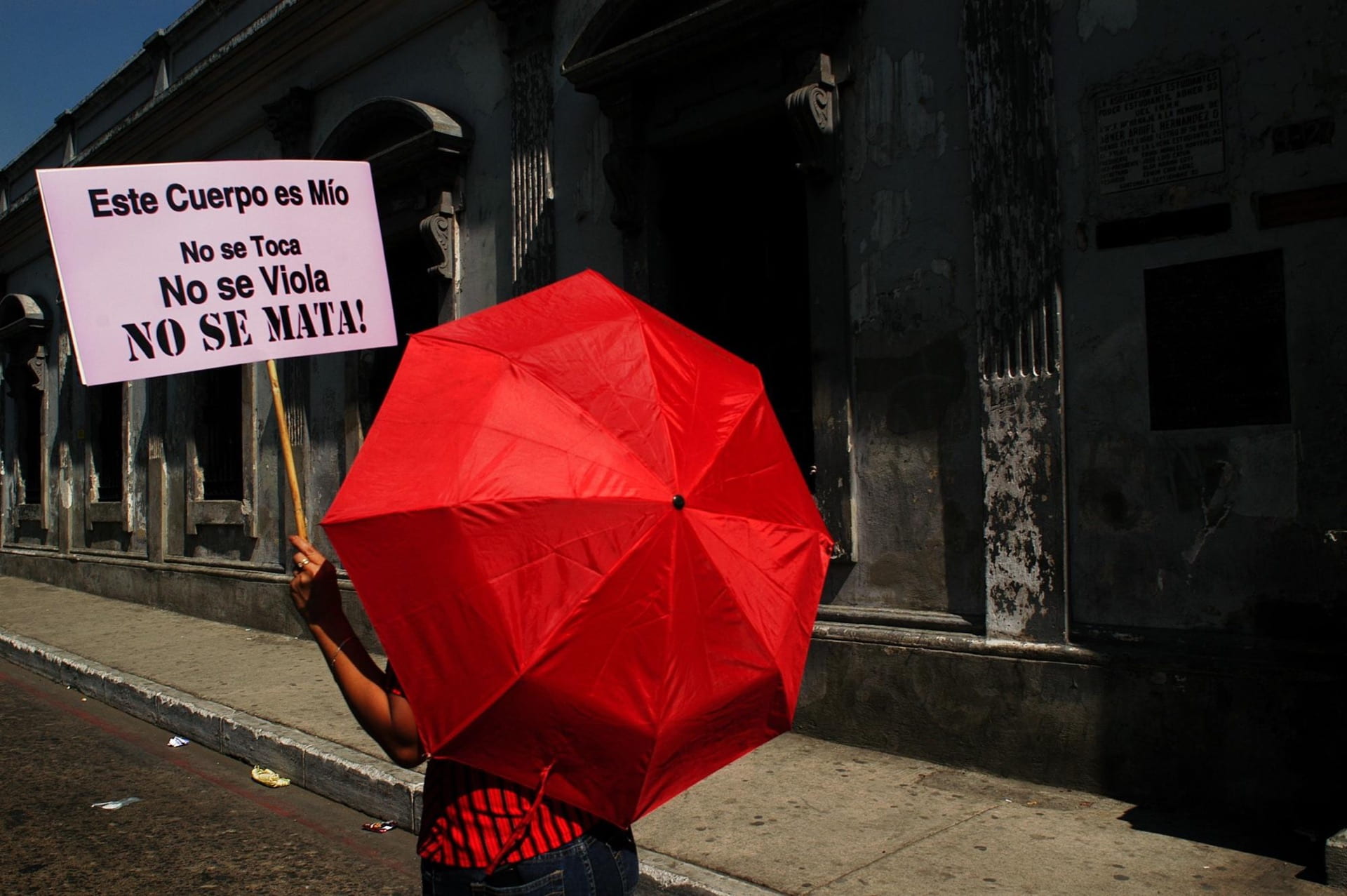The Other Side of the Ciudad Juárez Femicide Story
Activism Matters
For the last dozen years, fronteriz@s (border people) in the Ciudad Juárez-El Paso metropolitan area have heard shocking reports about women-killing, known as femicide (or in Mexico, feminicidio). About one of every three of the 370 women murdered since 1993 was a young teen who died as a result of grotesque, sexualized torture, according to non-governmental organization (NGO) lists, official reports and Amnesty International’s 2003 monograph, Intolerable Killings. The young women were raped and mutilated, and their bodies dumped in the desert periphery or on city streets. Since 1993, about thirty women have been murdered annually in the Juárez metropolitan area of more than two million people. Even higher rates of homicide exist among Juárez males: more than 200 men are murdered each year, though not tortured sexually.
There is more to this story and its tragedies than the victims, the violence and the eventual demonization of Mexico’s fifth largest city. Mothers of the murdered daughters began to organize in the 1990s, and their efforts have inspired many human rights and feminist activists, as well as some ordinary citizens, to raise awareness about violence against women and about public insecurity generally. Although the mothers have not obtained justice for their daughters, civil society activism is leading toward deeper democracy and a more genuine “rule of law” on the border.
WHY ARE WE WRITING THIS ESSAY?
Situated and grounded at the border, we have attended events, conducted research and participated in organized coalitions where the mothers of murdered daughters provided heart-wrenching testimonials, not only about the horrifying deaths, but also about police impunity. Impunity is the codeword for inept, incompetent and/or complicit law enforcement personnel and institutions at the municipal and state levels of Mexican society. The Juárez authorities devoted little time investigating the crimes; they lost or misplaced reports and even bones of some of the victims. Alas, Ciudad Juárez is not the only place in Mexico with a broken and corrupt law enforcement system. Whether people seek justice about femicide, homicide, domestic violence, theft or general public security, their efforts are seldom rewarded. Most crimes go unpunished in Mexico. This failure has become the most important public issue in the country today.
In the United States, anti-corruption procedures and relatively professional behavior took generations to achieve, and the U.S. law enforcement system remains flawed, fragmented and bureaucratic. Only in the last three decades have state laws and local police and sheriff departments begun to take seriously the common problem of domestic violence, which can lead to femicide (or as the United States classifies women-killing, homicide). According to U.S. Department of Justice figures, one in four women experienced physical assault from her partner. As scholars and activists, we hope that our work can lower such statistics in Mexico and the United States.
SOME THEORIES
Who is killing the women of Juárez? Theories abound. The answers multiply, though are often speculative. Initially, fingers pointed to foreigners, and an Egyptian engineer and U.S.-convicted sex offender, Abdel Latif Sharif Sharif, was jailed; from his prison cell he allegedly hired gangs to continue killing women. Sharif died in prison, but it appears very unlikely he was responsible for any of the serial killings.
In extensive media attention on both sides of the border, more theorizing occurred about the identity of the killers and their psychopathic and material motives: snuff film makers, drug dealers engaged in sport to celebrate profits, police officers, organ harvesters, gang members, U.S.-registered sex offenders and the sons of rich families, known as “los juniors.” People are quick to blame machismo, an oversimplified term that Latinizes the gender power relational changes all over the world. Although we can discount wild theories involving snuff films and organ trafficking, the fact is that world experts on serial killing have been unable to identify the culprits through the botched evidence provided by the municipal and state police.
Although we cannot identify the killers at this time, we can contribute explanations for the political, economic, and institutional conditions that are responsible for public insecurity, shockingly extreme violence against women and judicial impunity. Our explanations are less dramatic but paint a more comprehensive picture. In so doing, we do not demonize Ciudad Juárez as the unique, women-killing stain on the international map. In fact, international NGOs like Amnesty International have more recently begun to generate awareness about even greater rates of femicide elsewhere in Mexico and other parts of the Americas, particularly Guatemala.
Ciudad Juárez sits at the frontlines of globalization that started well before the North American Free Trade Agreement (NAFTA) that began officially in 1994. In the mid-1960s, Mexico established the Border Industrialization Program to encourage foreign investment and job creation in what began as feminized assembly-line production. From modest beginnings, the maquiladora labor force has grown to nearly a quarter-million workers in 300 plants in the city, most of them U.S. owned. Many workers migrated from Mexico’s interior; in fact, Ciudad Juárez is sometimes called a “city of migrants.”
At the outset, women represented about 80% of the assembly-line workers. By the early 21st century, the percentage of women in the maquiladora workforce diminished, but it is still more than half. In the 40 years of industrial production on the border, gender anxieties, threats and some male backlash have emerged in response to women’s greater earning power, however modest, in the formal workforce. The local media have sometimes expressed hostility toward the maquiladorawomen, most notably in the 1980s and early 1990s. Popular folklore often portrays these women as oversexed libertines who stay out late and dress provocatively, leading some politicians to blame the victims. However, by the late 1990s, the border media reflected massive outrage and soul-searching within the city.
What, then, is there about this industrial city that might aggravate violence along with high rates of femicide and homicide? We explore several issues in our context-situated explanations.
A FLUID BORDER CONTEXT
First, in a trans-national border location, with two sovereign governments, officials do not cross jurisdictional lines unless invited or given adequate resources to do so. Civil society activists face challenges in exercising oversight of law enforcement bureaucracies or pressing for reforms, including binational solutions.
In addition to the hundreds of Mexican women who have been murdered, several others victims were from Central America and the United States, and one from the Netherlands. Binational and transnational problems require binational or transnational solutions. Occasionally, the United States and Mexico agreed to cooperate with one another over murdered women, though far less cooperation occurs than over such issues as stolen vehicles, drugs and insect control. No matter how many international, regional, or national human rights reports (such as Mexico’s National Commission for Human Rights) condemn violence, the agencies lack authority or the “teeth” to compel changes in law enforcement practices. Thus, impunity reigns, and working-class women are the most vulnerable sector of the border population, which is migratory, border-crossing, and often anonymous—ripe for suffering many types of crime.
SOCIAL INEQUALITIES, VIOLENT DRUG TRADE AND A WEAK JUDICIAL SYSTEM
Obscene levels of inequality exist within Ciudad Juárez and between cities of Juárez and El Paso on both sides of the border. The border city is a gritty, industrial place as well as home to what may be the largest drug trafficking cartel in the world, the Juárez cartel, supplying the largest drug-consuming country in the world, the United States.
Drug killings occur on a regular basis in Juárez, weapons abound, and the violence of the drug trade spills over into mainstream society. Any explanation for the femicides must take into account the violent impact of the drug trade on border society, the proliferation of cheap narcotics corroding the social fabric, and the corrupting effects of drug trafficking/drug abuse on the political system and everyday life.
Assembly-line production, with its cheap wages (ranging from the legal minimum of US$4-5 per day to US$10 per day) and high turnover rates, creates an atmosphere of disposable labor. Industrial owners and foreign managers operate with accountability to headquarters and bottom-line profit considerations rather than to residents at the border.
Some conferences and media reports create the impression that only maquiladora workers are murdered. There is no doubt that egregious instances of corporate irresponsibility have occurred. For example, when a jet manufacturing worker arrived minutes late for her job, she was refused entry into the factory. She met her death walking home. Factories subcontract with bus companies and drivers, some sexual predators among them. One teen-aged worker was raped and left for dead, but was able to identify the driver. Women from many walks of life and occupations have been murdered, but not only maquiladora workers.
Finally, Mexico has yet to establish the rule of law, with effective law enforcement and judicial institutions. Few incentives exist for serious time investments in investigation and prosecution in a highly fragmented law enforcement and police system. Laws and law enforcement practices on domestic violence are relatively recent.
In a 2004-5 representative survey of women aged 15-39 in Ciudad Juárez, 27% reported physical violence and 11%, sexual assault, but fewer than one in five women would consider reporting that violence to the authorities. Some among those who are now survivors of domestic violence will be femicide cases in the future. In a huge national survey sponsored by Mexico’s Institute of Women (INMUJER) and Census Bureau (INEGI) in 2003, half of the respondents reported psychological and physical domestic violence. Esther Chávez Cano, who operates the anti-violence counseling center known as Casa Amiga, was only able to raise enough money to open the doors of the first and only battered women’s shelter in Ciudad Juárez in 2005.
In the United States, domestic violence rates are also very high, but victims are more likely to call 911 for emergency police response and protection. In 2006, the El Paso Police Department reported 31,000 domestic violence calls, figures that are probably not unlike those in other large cities of its size. And as in many U.S. cities, scores of homeless shelters exist, including several that “specialize” in family violence. The scourge of violence against women seems omnipresent. More must be done before women can live safely on both sides of the border.
ACTIVISM GROWS
At the border, anti-violence activists worked with non-governmental organizations to network and organize, beginning in the late 1990s. They began locally, spread across the border, and influenced the public in their own countries and globally, through international NGOs. Activists have raised awareness, first about femicide and later about the general problem of violence against women on both sides of the border. In Ciudad Juárez, one sees the iconic pink and black crosses in many public places, on telephone poles and building facades along major thoroughfares. The ominous crosses symbolize femicide.
Solidarity marches commemorate the victims on special occasions: International Women’s Day on March 8; Día de los Muertos in early November; and V-Day in mid- February. Eve Ensler’s play, Vagina Monologues, is performed annually. Ensler added a monologue on the femicide in 2003, putting it on a par with misogyny in other parts of the world. In 2004, the largest-ever solidarity march across the border in El Paso-Ciudad Juárez occurred, drawing 5,000 to 8,000 people from around the world. In organizing terms, events like these are “tough acts to follow,” but many border anti-violence activists remain committed to seeking justice, spreading awareness in order to eradicate interpersonal violence, and exercising oversight over public institutions. Meanwhile, international activists turned their attention to other parts of the world with higher femicide rates.
CLOSING REFLECTIONS
There are at least two, if not more, stories about femicide in Ciudad Juárez. One is about the victims: the tragic deaths of hundreds of women. The other story is about civil society activism, an energy that is vital to deepening democracy and creating accountable governments. Beginning with the mothers of the victims and spreading to human rights and feminist NGOs, activists made valiant attempts to generate awareness, sometimes at risk of their own safety. They began locally and spread globally. While activists have succeeded in putting violence against women on the political agenda, or reasserting this issue on public agendas, the mothers of Juárez still await justice for the murdered daughters.
Kathleen (Kathy) Staudt, PhD, is Professor of Political Science at the University of Texas at El Paso. Her book,Violence and Activism at the Border: Gender, Fear, and Everyday Life in Ciudad Juárez, is forthcoming from the University of Texas Press in 2008.
Howard Campbell, PhD, is Professor of Anthropology at the University of Texas at El Paso. He is currently writing a book titled Drug War Zone: Front-line Accounts of Drug Trafficking and Law Enforcement on the U.S.-Mexico Border.
Related Articles
Salvadoran Youth, Transnationalism’s Other Product
English + Español
A completely distraught junior high school teacher in the Washington DC area approached her assistant principal—a highly-educated white middle-class man—one morning for urgent…
Cuba on the Edge: Short Stories from the Island
If you want to read contemporary Cuban fiction and do not have access to the Spanish original, an increasing number of excellent translations will now allow you to become acquainted with…
Making A Difference: Literacy in Calca
Seated on the floor of their school house twenty attentive first grade eyes watch as Martha turns the pages and asks aloud about the fate of David a friendly llama…





